There are a total of 11 islands on Lake Maggiore, eight of which are in Piedmont, one in Lombardy and the remaining two are in Swiss waters.
The most famous and fascinating of these is certainly the archipelago of the Borromean Islands including Isola Madre, Isola Bella and Isola dei Pescatori which are situated between Stresa and Verbania. However, don’t miss a ferry ride out to also see the islands of La Malghera, the isle of Partegora and the beautiful islet of St. Giovanni. And don’t miss the opportunity to circle three lesser known islands which make up the Castles of Cannero, or to visit San Pancrazio (or Grande Isola) and Isolino (or Isola Piccola) which make up the Brissago Islands in the Swiss part of the lake.
Private English speaking guides and chartered boats can be hired to explore all of the islands on Lake Maggiore. Otherwise there are many water taxis and public boats to choose from in the towns and villages around the lake. If you’re staying in the Piedmont regions of the lake, then the main car park in Stresa is an ideal parking place with plenty of paid parking but, in the peak of Summer, spaces are hard to find so do arrive early). Simply key in Piazza Umberto, Stresa, to locate the carpark. Look out for the gentlemen wearing sailor caps. They run the ferries. A special mention goes to one of them in particular. Called Adamo, he’s quite a character, but he really knows the lake and has plenty of funny tales to tell in his broken English!
Isola Madre
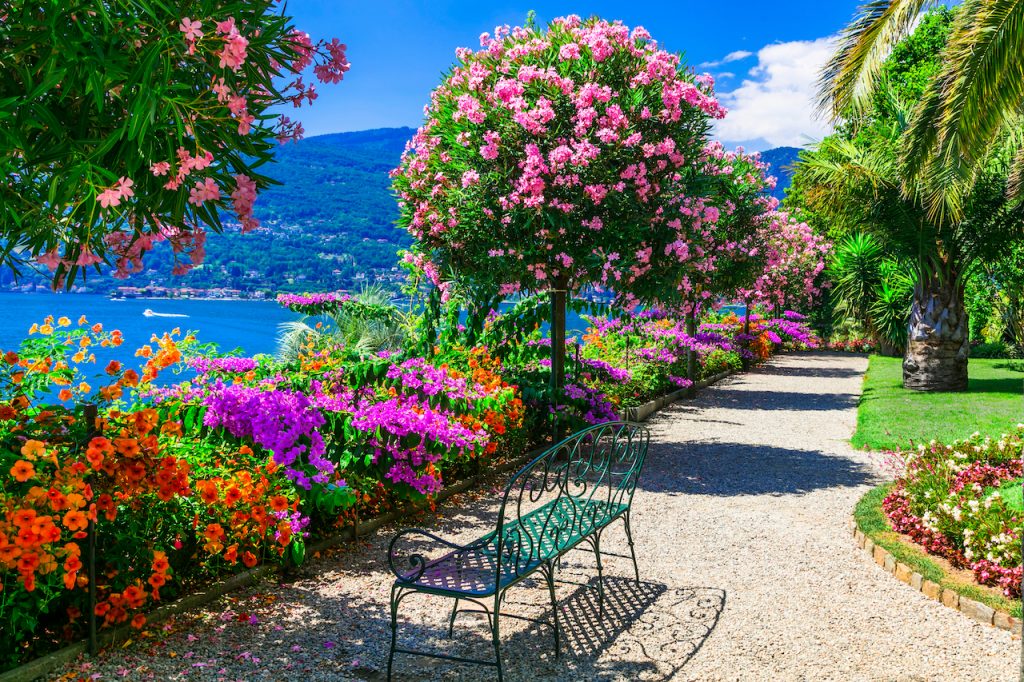
The largest of the Borromean islands, Isola Madre is home to some incredible gardens which are best viewed in the Spring when the azaleas, camellias and rhododendrons are in full bloom. Wandering around the 19th century English style landscaped gardens is a magical experience – you’ll find budgerigars flying above you and peacocks walking around perfectly manicured lawns at your feet – whilst the variety of flora and fauna in the immense space is quite astounding. As well as the colourful blooms, there is a fantastic collection of citrus trees and the largest specimen of Kasmir Cypress. And also not to be missed is the scala dei morti, (staircase of the dead), which is covered with wisteria.
There is plenty to see inside as well as outside though. Isola Madre is also home to a large palace where you will find a plethora of artefacts belonging to the Borromeo family. Probably the most famous of the rooms are the Doll’s Room, the Room of the Seasons and a whole room devoted to a Puppet Theatre.
Whilst you’ll need to use a boat to get to Isola Madre, it will need to be a chartered boat with a captain or one of the official ferry boats. It’s not possible to simply hire your own boat and moor up on the island.
Isola Bella
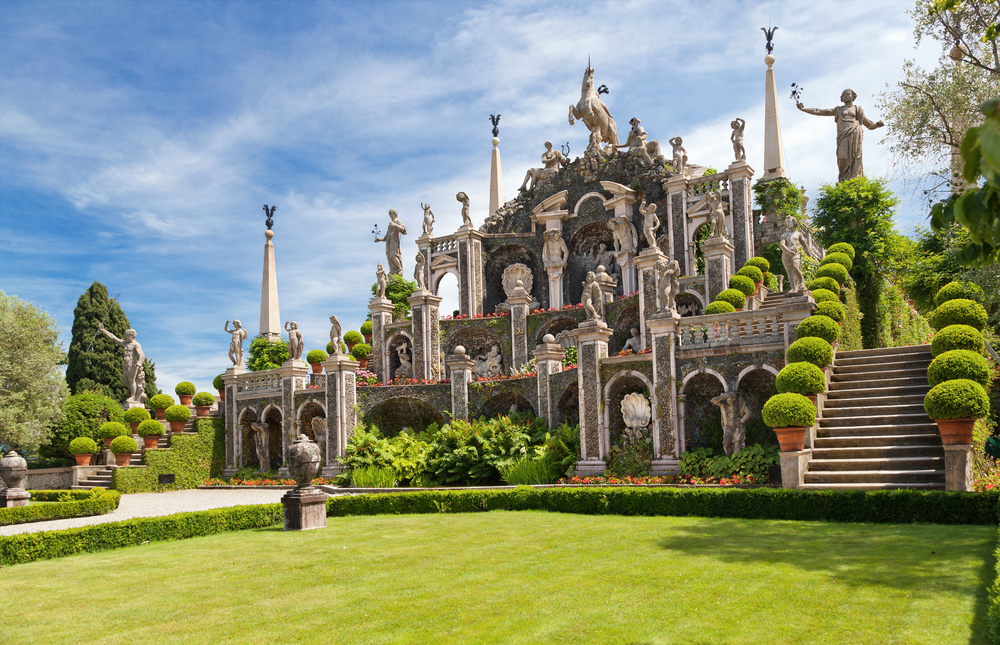
Arguably the busiest of the Borromean Islands, Isola Bella is dominated by its Baroque palace. Whereas Isola Madre has English styled gardens, Isola Bella has a very Italian style garden which rises 37 metres tall and is laid out over 10 different terraces. Yet again, this is an enchanting place. You’ll find white peacocks strolling through the grounds and an abundance of exotic plants and flowers which flourish in the mild climate that the island can boast as well as ponds, fountains and statues all dating from the 17th century.
Just as on Isola Madre, it is possible to explore not just outside but also inside. The island is home to a palazzo that began construction in 1632 under the guidance of Carlo III who dedicated the building to his wife, Isabella d’Adda after whom the island takes its name. Much of the palace is open to visitors and its worth enjoying a tour of its opulent rooms filled with priceless antiques and artworks. Approximately 20 rooms are open to the public, the most notable of which include the Throne Room (Sala del Trono), the Sala di Napoleone (named as it was where the French general slept when he stayed on the island in 1797) and the Salla della Musica (Music Room) where the Stresa Conference was held in April 1935.
The final part of the island, adjacent to the palace and gardens, is a small village. Once a fishing village, this is now home to restaurants and souvenir shops.
As with Isola Madre, whilst you’ll need to use a boat to get to Isola Bella, it will again need to be a chartered boat with a captain or one of the official ferry boats. You can’t simply hire your own boat and head across.
Isola Pescatori
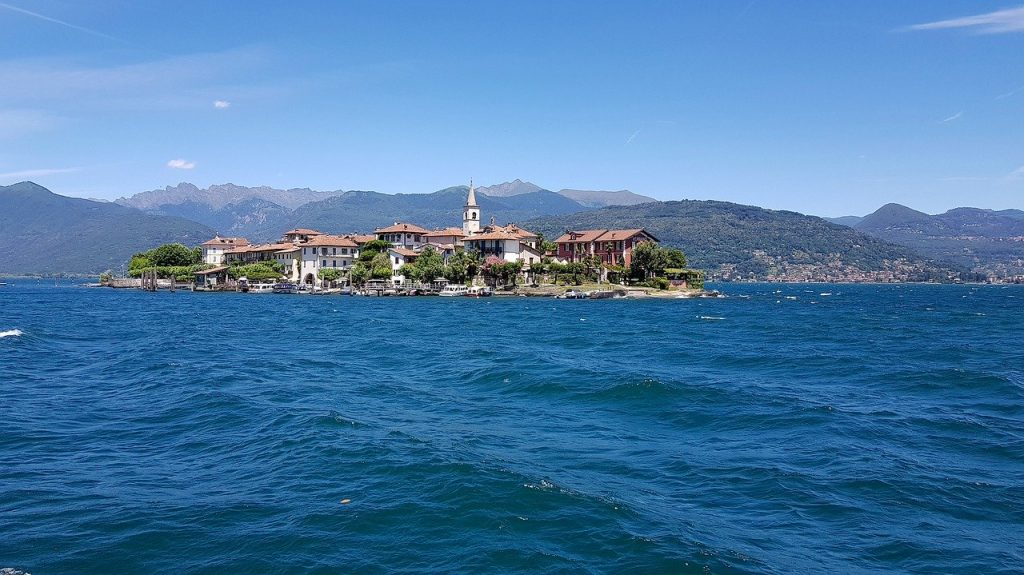
Isola Pescatori is the Island of the Fisherman, and is the only one of the Borromean islands to still be inhabited today. The island is tiny but home to a charming village with narrow streets, winding alleyways and small souvenir shops. Look above you to see the long balconies of the island’s homes which would once have been used to dry fish. It’s also worth taking a look inside the island’s church, the Church of San Vittore, home to artwork depicting scenes from Jesus’ life with his fishermen disciples. Set aside time to enjoy lunch on the island at one of the excellent fish restaurants.
The story goes that the famous writer, Ernest Hemingway arrived on Isola Pescatori in a rowing boat he borrowed from the barman of the Grand Hotel in Stresa. On coming ashore, he apparently asked if he could get a martini! Daily boat trips to the small island were later fictionalised in Hemingway’s A Farewell to Arms. Incidentally, should you wish to discover more about the writer, Hemingway booked into room 106 which is now fittingly named, ‘The Hemingway Suite’, at the Grand Hotel Des Iles Borromees in Stresa. A true ‘Hemingway experience’ in the newly designed bar at the hotel has not forgotten him. Several photos adorn the walls, and look out for the Hemingway special cocktail on the drinks menu. Insider tip: Go to reception and ask for the manager who will be very proud to display a framed page of the guest book which Hemingway signed on a return visit in 1948. It intriguingly reads: ‘Ernest Hemingway (an old client)’.
Unlike on Isola Madre and Isola Bella, it is possible to moor you own boat on Isola Pescatori but only if you have reserved a table for lunch or dinner at Ristorante Verbania. Alternatively, if you make a reservation, the restaurant staff can also come and collect you from the mainland!
Isle of St. Giovanni
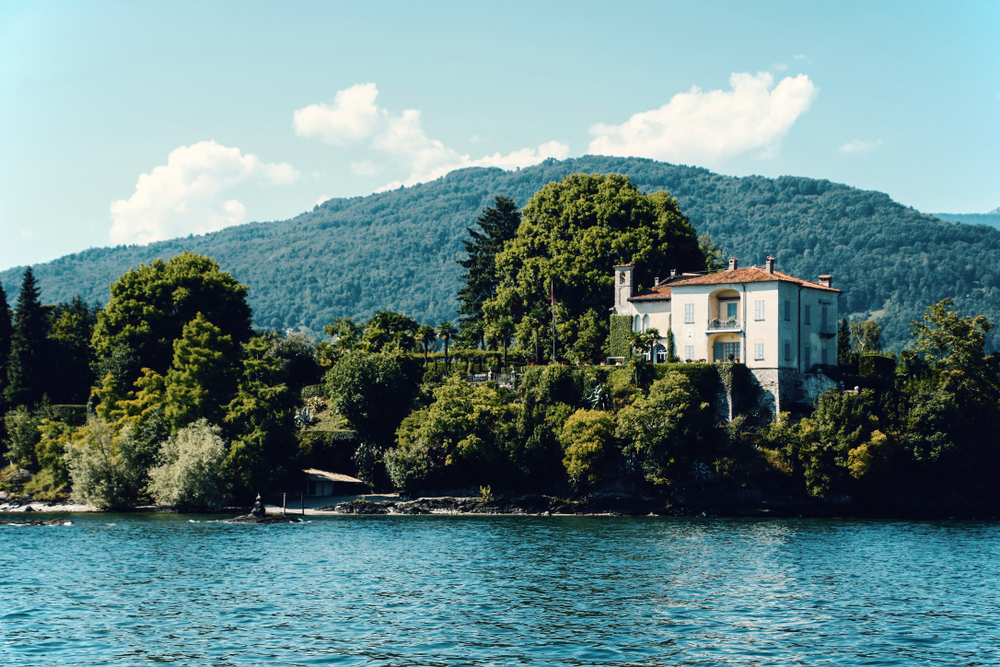
Sitting in the lake waters literally 30 metres in front of Verbania, the islet of St. Giovanni is home to the Palazzo Borromeo, where Arturo Toscanini lived for a long time during the seventeenth century from 1927 to 1952. Arturo Toscanini is widely considered to have been one of the greatest conductors of the 20th century.
However, the history of the islet dates back long before this. It first received mention in 999 AD in a document drawn up by Otto III. At that time, it was home to a castle and church dedicated to St Michael the Archangel and was named ‘Isola di Sant’ Angelo’. However, the name changed to San Giovanni when the church was demolished. In the 17th century, as with so many of the islands on Lake Maggiore, the Borromeo princes took control, restoring the buildings and improving the gardens and parkland.
Whilst the island is not open to the public today, visitors can enjoy a good view of it just by walking along the shoreline in Pallanza.
Malghera Island
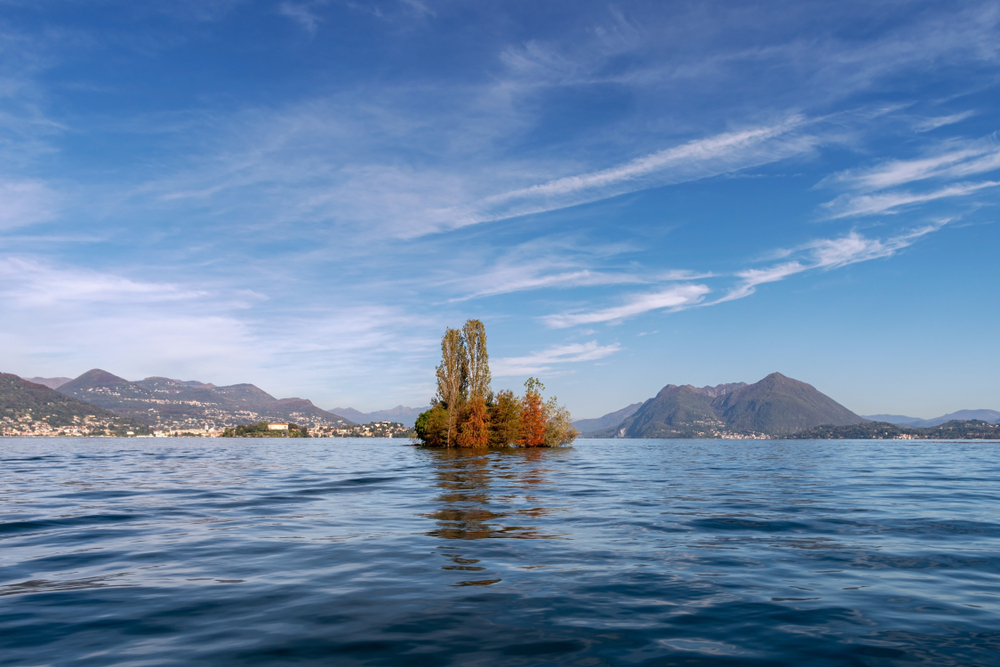
Nestled between Isola Bella and Isola Pescatori, Malghera Island is tiny and uninhabited but can still be reached by boat. Nicknamed the Isolino degli Innamorati (Lover’s Island), its tiny little beach is the perfect spot for a romantic rendez-vous.
Partegora Islet
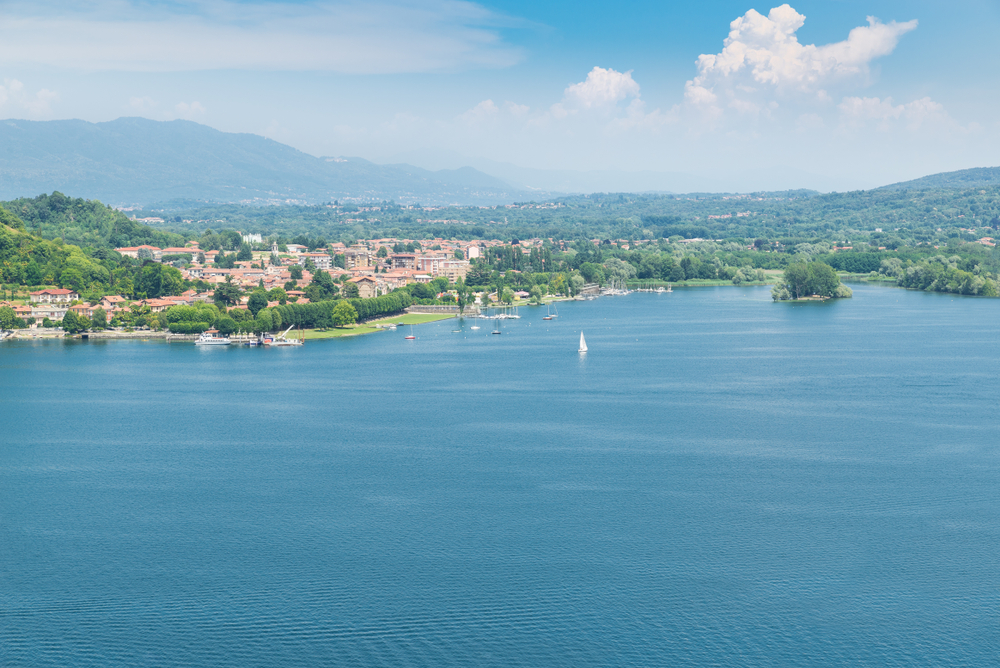
The only one of the islands on Lake Maggiore to fall into Lombardy waters, Partegora is a tiny island near the shore at Angera. Just 3500 square metres in size, it sits opposite the Oasi della Bruschera nature park, a flooded forest with a network of trails to allow it to be easily explored on foot. The island itself has a sandy beach at its Southern point with a lot of the rest of its shoreline covered in marshy canes. The island has a number of ‘claims to fame’, the most recent of which dates back to 1776 when Alessandro Volta discovered marsh gas or methane on the island whilst staying as a guest of the Castiglioni family.
Cannero Castles
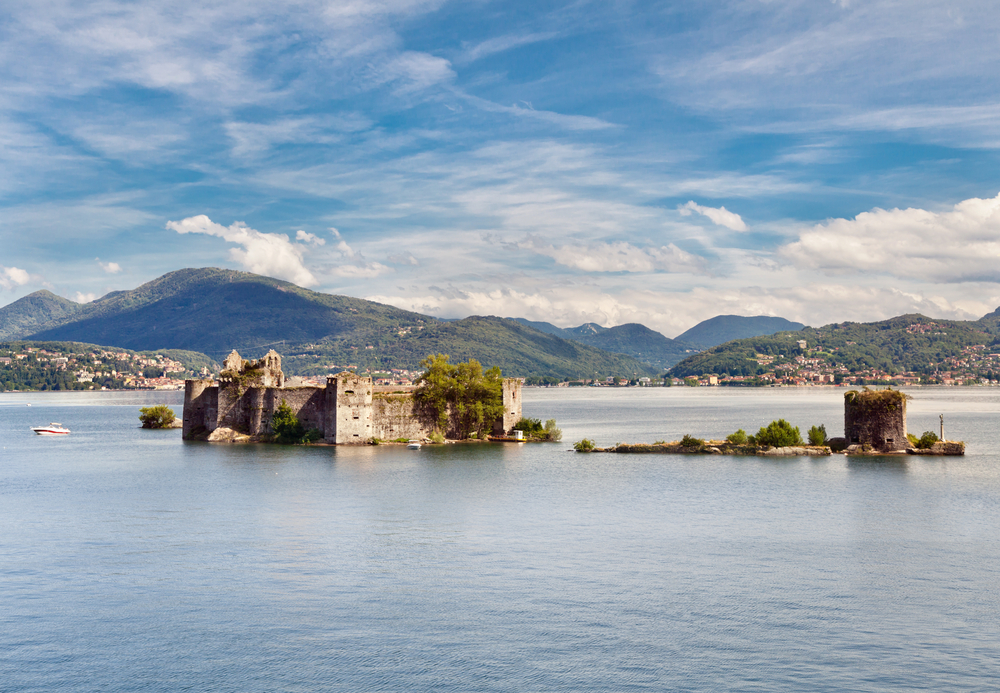
Three small islands make up the Castles of Cannero. The remains you see today are those of the Fortezza Vitaliana which was built by Ludovico Borromeo to defend the lake against incursions from the Swiss, and so named in honour of the founder of the family, Vitaliano I. However, this was actually the second castle to be built on the islands. The first was the Castello della Malpaga which, from the 15th century, was used by the Mazzarditi family. These were a band of five cruel brothers who in 1403 and 1404 terrorised the nearby residents of Cannobio, and who used violence to thieve and loot from the local population. They even kidnapped young ladies. They were eventually stopped when the Visconti family laid siege to the fortress, starving the brothers into surrender. The castle was then destroyed and a new one built by the Borromeo family years later.
Today, you can see the crumbling remains of the old castle’s massive walls and ruined tower. At the moment, the islands and its fortress are not accessible to visitors but you can still explore them from the water. In a few years time, access may be possible as major plans are underway to restore the castle and to open it to the public, but in the meantime, you can still enjoy it in the comfort of your boat.
Brissago Islands
The Brissago islands are two islands in the Swiss part of Lake Maggiore, situated approximately 1000 metres from the shore. Both have a long history that date back to Roman times.
Isolino (Isola Piccola)
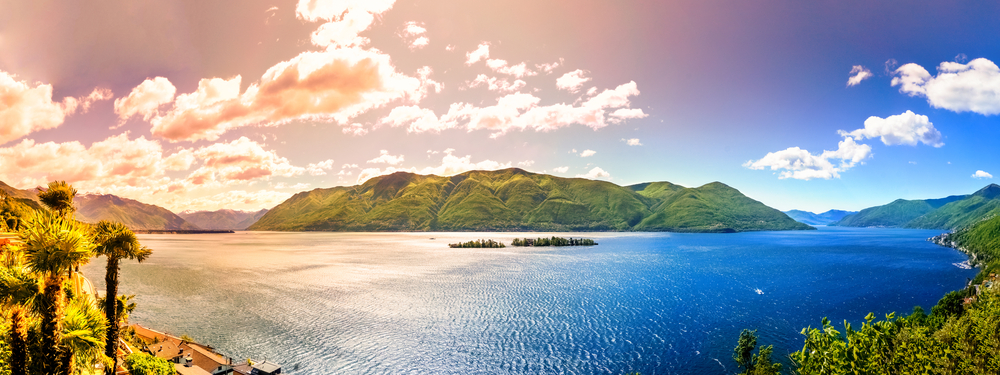
The smaller of the two islands, Isolino is also known as Isola di Sant’Apollinare. This island is not open to the general public but is home to extensive native vegetation and the ruins of an ancient church.
San Pancrazio (Grande Isola)
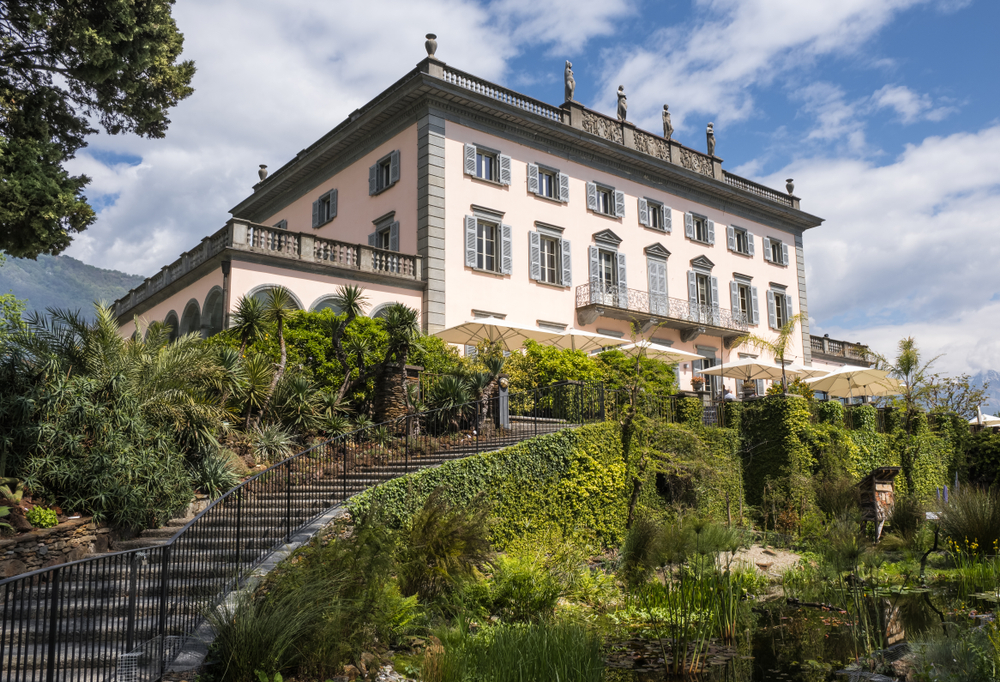
San Pancrazio is the larger of the two Brissago islands and is famous for its botanical gardens. Like its smaller neighbour, it benefits from the mild, almost sub tropical climate, on this part of Lake Maggiore.
In the 13th century, a monastery was built on San Pancrazio, along with a church but the islands were abandoned in 1571 when Pope Pius V ordered the suppression of the Humiliati nuns. The island remained abandoned until the late 19th century when the islands were purchased by husband and wife, Richard and Antoinette Fleming. They built a large house on the island and started the creation of a botanical garden. However, following her husband’s death and a number of poor investments, Antoinette was forced to sell the property in 1927. The islands were purchased by Max Emden who demolished the existing house and instead built a new 30 room villa complete with 33 metre long swimming pool. Whilst he did not have a passion for gardening, he did ensure that the botanical gardens were maintained until his death in 1940. The islands passed to his son, Erich, who in 1949 sold them to a consortium that included the Ticino Canton, the municipalities of Ascona, Brissago and Ronco sopra Ascona, and the Swiss Nature Protection League. This body opened the islands to the public so that the botanical gardens could be admired and appreciated by all. Today, more than 90,000 visitors explore the gardens each year.
These days, the gardens cover an area of over 2.5 hectares and are home to approximately 1,500 different species of plant, including azaleas, rhododendrons, Japanese palm trees, camellias, Japanese banana, bamboo, magnolia, agaves, cypress and yucca.
If you’re looking to explore the islands of Lake Maggiore and are looking for a base, then take a look at the villas to rent on Lake Maggiore available from villa rental company, Bookings For You.
This article was written by the team at Bookings For You in conjunction with villa manager, itinerary planner and property scout, Annette Kelly. We hope that this introduction to the islands of Lake Maggiore has inspired you to visit this lesser known of Italian Lakes. If you would like help finding the perfect villa or apartment to rent on Lake Maggiore, or would like help putting together an itinerary, please get in touch with either Annette or the team at Bookings For You. Annette loves organising itineraries for guests wanting a truly luxury experience so do get in touch with Bookings For You so that she can personalise your itinerary.
